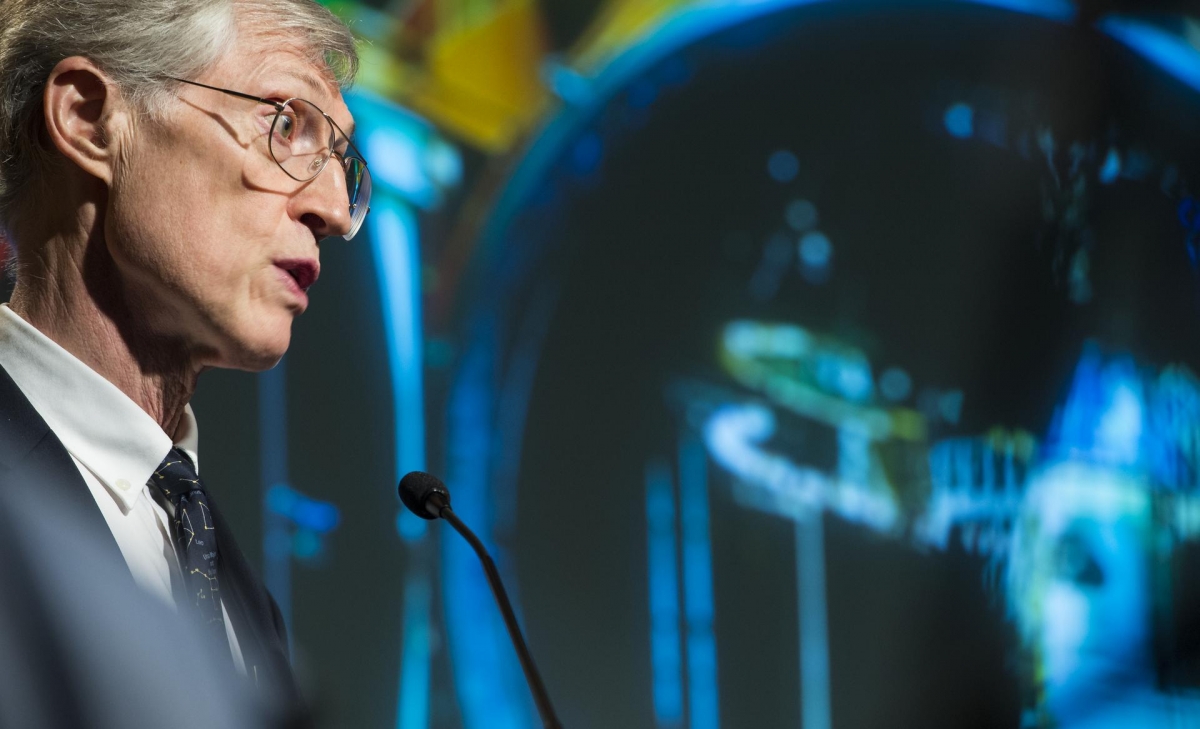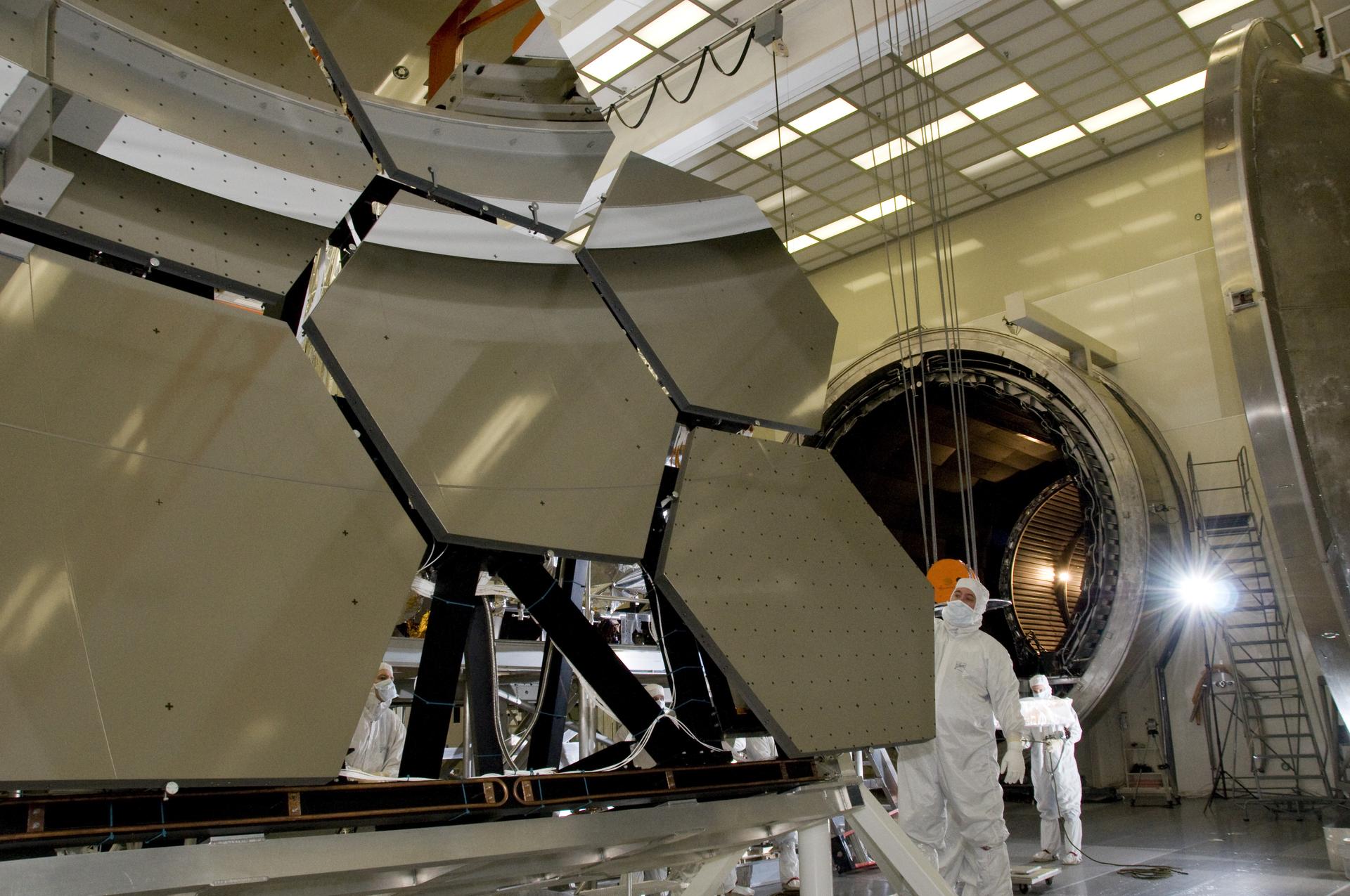By Kristen Mitchell
Astrophysicist John C. Mather said a new NASA telescope being built will be so powerful it could detect a bumble bee hovering in space at the distance of the moon.
The James Webb Space Telescope is the successor of the Hubble Space Telescope and will use infrared technology to detect and study the first light objects in the universe.
Dr. Mather was at George Washington University Thursday to talk about the new NASA telescope planned for launch in October 2018 and the future of space exploration as part of a Department of Physics colloquium “Creating the Future: Building JWST, What it May Find, and What Comes Next?”
Dr. Mather won the Nobel Prize in Physics in 2006 and is a project scientist working on the advanced JWST telescope. It will be sent a million miles from Earth where it will hang in the darkness to examine every phase of universal history—from the first galaxies that formed after the Big Bang to the formation and evolution of planetary systems capable of supporting life, according to NASA.
“We’re sending it a million miles from here, unlike where the Hubble is where you can get to it with astronauts,” Dr. Mather said. “We’re sending it way way out here, and there’s a reason for that, which is you can’t do the science anywhere closer.”
A main feature of the telescope is a mirror made of 18 hexagonal segments that unfold and adjust after launch. The mirror wall is extremely sensitive to light and will be passively cooled by a sunshield to -400 degrees Fahrenheit. The telescope will be able to recreate images like the Hubble Deep Field, a construction of a small region in the constellation Ursa Major made after many observations, and show even more distant galaxies.
 Astrophysicist John C. Mather is a project scientist working on the James Webb Space Telescope at Goddard Space Flight Center in Maryland. (Photo credit: NASA)
Astrophysicist John C. Mather is a project scientist working on the James Webb Space Telescope at Goddard Space Flight Center in Maryland. (Photo credit: NASA)
The JWST will also be able to show the Eagle Nebula, an area where stars are born, using infrared light that will allow researchers to see through the heavy dust to what is behind it. The technology will allow astronomers to “see inside their nursery and take the covers off,” Dr. Mather said.
The telescope is being built at Goddard Space Flight Center in Maryland. When it is completed it will be loaded onto a truck, and the truck will be loaded onto a specialized plane to Houston, where the JWST will undergo testing.
“This is where we get to find out have we made the mistake that Hubble made where it doesn’t focus,” Dr. Mather said.
The JWST is an international project led by NASA in partnership with the Canadian Space Agency and the European Space Agency. It will be launched on an Ariane 5 rocket.
While Dr. Mather is focusing on the JWST, there is always more to explore in space. Future exploration and looking for life beyond Earth will require larger and lighter telescopes. Scientists will also have to invest fusion drive technology to go far and fast. Despite the technological challenges, there is an immense amount that can be accomplished, Dr. Mather said.
“We’re not going anywhere fast,” he said. “As far as I can tell, Einstein didn’t give us any good hints about wormholes.”


